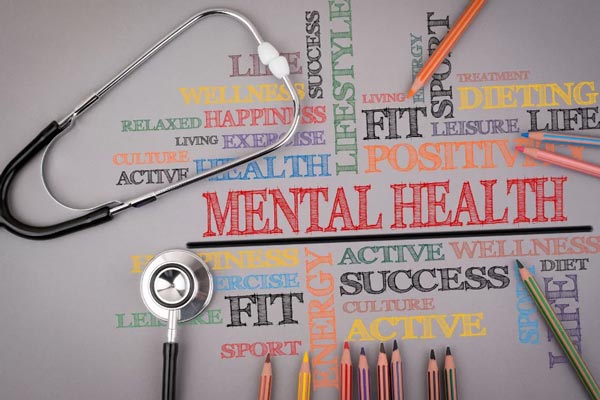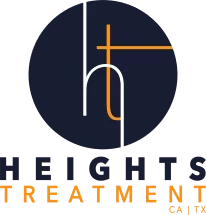Table of Contents
Key Points
- There is a growing willingness to diagnose and treat mental disorders like PTSD and ASD without resorting to stigmatization.
- Around 4% of US adults have had PTSD in the last twelve months, and many US adults have a co-occurring alcohol-use disorder as well.
- PTSD requires a broad set of criteria for diagnosis, as well as a minimum of 30 days of separation from the traumatic event.
- ASD requires a broad set of criteria for diagnosis, as well as a maximum of 30 days of separation from the traumatic event.
Trauma is widespread: About 50% of US adults will experience at least one traumatic event in their lifetime.[1] A traumatic event could be a natural disaster such as a tornado or hurricane, a human-caused disaster (like a railway collision), physical/sexual violence (actual or threatened), combat in warfare, or something similar.
Acute Stress Disorder (ASD) occurs within the first month following a traumatic event and often includes dissociative symptoms. Post Traumatic Stress Disorder (PTSD) is diagnosed when symptoms persist beyond one month after the traumatic event, but the presence or absence of dissociative symptoms is not a distinguishing factor between ASD and PTSD.
Not everyone who experiences a traumatic event will develop an accompanying stress disorder. If you or a loved one has developed ASD or PTSD, there are evidence-based treatment approaches that can help you recover.
Trauma-Related Disorders
History
Even though most people associate trauma-related disorders with military trauma, anybody who has experienced trauma can develop a trauma-related disorder. The development of the acronym “PTSD” and the emergence of the distinct disorder “ASD” are evidence of a growing willingness to diagnose and treat mental disorders without resorting to stigmatization.
PTSD-like symptoms were first described by physicians tending to Civil War veterans. They could include a rapid pulse, anxiety, and erratic breathing. These soldiers were diagnosed with “Soldier’s Heart,” given medication, and sent back to the frontlines.
By WWI, this terminology was replaced by the description of “Shell-Shocked.” Symptoms could include anxiety and sleeplessness. Since the explosion of nearby artillery shells was blamed for this condition, soldiers were given a few days respite from the frontlines but then sent back to war.
By WWII, this terminology had fallen out of favor; instead, “Battle Fatigue” had become the chosen diagnosis. The long military campaigns were exhausting the soldiers. Soldiers were allowed to rest for an indefinite time away from the front lines under the supervision of an attending physician.
By 1980, the diagnosis “PTSD” entered the DSM-III. Civilians who had never been to battle zones began to be diagnosed with PTSD. While originally included in the “Anxiety Disorders” category in the DSM-III, it now exists in a special category called “Trauma and Stressor Related Disorders” in the DSM-V.
How Common Is PTSD?
It’s estimated that 3.6% of US adults had PTSD in the last twelve months.[2] The lifetime prevalence rate is 6.8%, which means there are nearly twice as many people who have had PTSD at some point in their lives as there are those currently experiencing it.
The subjective severity of PTSD experiences is split almost equally into mild (30.2%), moderate (33.1%), and severe (36.6%) cases. In adolescents, almost four times as many females (8.0%) reported PTSD symptoms than males (2.3%).
Approximately one in three people with diagnosed PTSD have had alcohol-use disorder (AUD) at some point in their lives.[3] This statistic is especially pronounced among people with a military background. As of 2022, only 10.5% of US adults aged 12 and older had AUD at some point in their lives.[4]
AUD is overrepresented in people with a military background who also have suffered from PTSD.
Post-Traumatic Stress Disorder Diagnosis
 The human response to trauma has been thoroughly documented and studied for over one hundred years. Since our understanding of trauma has become more insightful and expansive, we now have more specific terminology to describe what is experienced by people who have developed a stress disorder.
The human response to trauma has been thoroughly documented and studied for over one hundred years. Since our understanding of trauma has become more insightful and expansive, we now have more specific terminology to describe what is experienced by people who have developed a stress disorder.
Only a licensed physician can make an official diagnosis from the DSM-V (Diagnostic and Statistical Manual of Mental Disorders). There is a wide set of criteria in the DSM-V that must be met to warrant a PTSD diagnosis, such as:[5]
- Experiencing one symptom of re-experiencing the trauma (recurrent and intrusive thoughts, nightmares, flashbacks, psychological distress, and/or arousal caused by memories/reminders of the trauma)
- Experiencing two or more symptoms of psychological avoidance of the trauma and emotional numbing (amnesia, loss of interest in hobbies, feelings of detachment from others, restricted range of emotions, and a sense of doom)
- Two or more symptoms of increased arousal (sleep problems, irritability, difficulty concentrating, hypervigilance, and an exaggerated startle)
Acute Stress Disorder Diagnosis
There are many similarities between ASD and PTSD. Like PTSD, Acute Stress Disorder (ASD) is a disorder described in the DSM-V which is characterized by:[6]
- Experiencing a traumatic event.
- Symptoms of re-experiencing the trauma, such as recurring thoughts, images, nightmares, flashbacks, and intense emotional distress upon exposure to reminders of the trauma.
- Displaying persistent avoidance of memories or reminders of the trauma.
- Displaying symptoms of anxiety or increased arousal (sleep problems, irritability, difficulty concentrating, hypervigilance, and an exaggerated startle).
There is some controversy regarding ASD’s inclusion in the DSM-V. However, including time-sensitive diagnoses could help prevent stigmatizing otherwise normal and transient reactions to a traumatic event in the first thirty days.
ASD vs PTSD Comparison
If you’re a healthcare professional, the main difference between an Acute Stress Disorder (ASD) and PTSD diagnosis is the timing of the symptoms after the trauma.
- An ASD diagnosis must involve a disturbance lasting at least two days but lasting no more than thirty days from the time of the initial traumatic event.
- In contrast, PTSD will not be diagnosed until thirty days have already passed.
If you don’t have a medical background but are concerned for somebody you love, keep a record of the symptoms you see immediately following a traumatic event. If your loved one seems more detached than usual, you should take them to get screened for ASD.
A likely treatment plan for ASD will include short-term medication and psychotherapy.
Even if no ASD symptoms immediately present themselves, your loved one can still develop PTSD symptoms in time. If this happens, they will need to be screened for PTSD. A likely treatment plan will include long-term medication and psychotherapy.
Treatment Approaches for ASD or PTSD
PTSD and ASD can be hidden by addictive behaviors like alcohol-use disorder (AUD) and substance-use disorder (SUD). Many times, people develop unhealthy coping mechanisms to avoid re-experiencing memories or reminders of the trauma through which they lived.
It is difficult to manage behaviors like AUD and SUD through sheer willpower. Fortunately, there are professional treatment facilities nearby that can use evidence-based therapies to treat PTSD, ASD, and any co-occurring substance-use disorders.
Some therapy interventions include:
If you are suffering from a trauma-related stress disorder or co-occurring substance-use disorder that is adversely affecting your quality of life, seek treatment immediately.
We believe that long-term recovery and rehabilitation are possible for those who have PTSD, AUD, and any co-occurring addictive behaviors. We use the best of what science and medicine offer to design an individualized treatment plan for each client.
We don’t believe in one-size-fits-all treatment approaches. There is no single remedy for your addiction or stress disorder.
With various residential and outpatient treatment programs and expert-led therapies, we have every tool you need to build a sustained recovery and a better tomorrow.
Frequently Asked Questions
The Heights Treatment Editorial Guidelines
There is a vast amount of misinformation online especially as it relates to health & wellness. We have made it our mission at The Heights Treatment to provide accurate, medically sound content that has been medically reviewed by a doctorate level clinician so that you can trust the information contained within our website.





